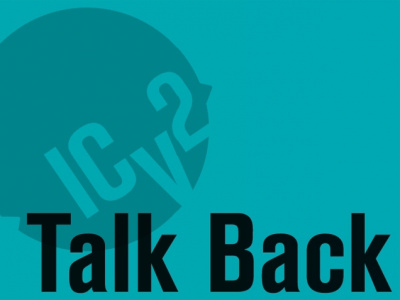 Talk the Talk, Walk the Walk is a weekly column by Kendall Swafford of Up Up Away! in Cincinnati, Ohio. This week, Kendall comments on the recent news of comic price cuts.
Talk the Talk, Walk the Walk is a weekly column by Kendall Swafford of Up Up Away! in Cincinnati, Ohio. This week, Kendall comments on the recent news of comic price cuts.One bit of business before we begin. Last week my column was largely based upon a sales chart I had seen but could not subsequently locate. Said chart and accompanying data was provided by Mr. John Mayo, and was found on Comic Book Resources’ website. That data and much, much more can by found at www.comicbookpage.com. Many thanks to John and his number-crunching powers!
Christmas came early this year, courtesy of DC Comics. As I would assume you’ve all heard by now, Thursday evening DC announced a price rollback, returning all ongoing 32 page monthly titles to $2.99. It took a 2-page story reduction to do it, but that’s OK by me. Heck, when I was a kid, 17-page stories was the norm. Now, a price reduction HAS happened before, whenever DC would change formats. Back in the early 70s, DC pushed the 15¢ 32-pager to 48 (or 52) pages for a quarter. After a few months, 32 pages returned, but now priced at 20¢.
In this case, however, DC affirmed very publicly what all of us already knew; that the publishers had gone to far, that four dollars was just too much, and customers were unhappy. While DC and I had had our differences as of late, I have very publicly professed my love and admiration for all things DC, both as a fan and as a retailer. So I want to say ‘thank you’ to DC Comics, and the entire management team who saw the writing on the wall, and chose to do the right thing. This retailer truly appreciates it.
And maybe the two-page story reduction will keep the trains running on time, easing the monthly burden on writers and artists across-the-board. THAT would mean almost as much to me as the price reduction.
Perhaps coincidentally, though I’m told not hastily, Marvel Comics announced similar, though far less sweeping changes. Promising any NEW ongoing 32-page titles would launch at $2.99, Marvel also mentioned in the same breath that they would also be backing off of the number of titles solicited, beginning in January. Here’s what that sounded like to me, "Hey kids, good news and bad news time. The good news; all NEW 32-pagers will be priced at $2.99. The bad news; we’re not gonna publish any new titles." I know that paints Marvel in a more cynical light, and maybe they weren’t trying to talk out of both sides of their mouth, but that’s how it came across, at least in a conspiracy-theory type way. On the other hand, DC didn’t didn’t exactly trumpet the fact that it took a two-page story reduction to make the price rollback happen.
So I have to applaud Marvel as well, for at least taking some tentative steps in the right direction. For Marvel, the more important nugget here is that (I think it was) David Gabriel stated that beginning in January, we would start to see a reduction in the number of TITLES solicited. And that’s a good thing. Their entire publishing line has become so incredibly fractured as to be rendered non-functional. At four bucks, no one wants to commit to a new series past the first issue, and fans are frustrated that their favorite character is starring in multiple monthly series. Some would argue that choice is a good thing, but let’s be honest here; we all know who we’re preachin’ to. A Deadpool fan wants to collect all things Deadpool, but there have been eighty-two unique Deadpool comics and/or graphic novels so far this year, and that’s WAY too much! So thank you to everyone at Marvel Comics for seeing the light as well.
Now, I think IDW has to take a hard look at itself regarding cover prices. IDW has some comics that people really want to buy, like Locke & Key, but most of my success with IDW comes from books like Bloom County or Darwyn Cooke’s Parker novels, not from their $4 comic books. What are there currently, four ongoing G.I. Joe titles? Plus miniseries and one-shots!? It’s too much. And while the cardboard covers are nice, fans would gladly sacrifice paper quality for a lower price. IDW had previously mentioned that sales in the direct market for them are anemic compared to both digital and bookstores. So do something about it already. A lower price point would all but guarantee increased revenue in the direct market. At the very least, consider publishing first issues at a significantly lower price point, ala Vertigo. I can name a half-dozen IDW titles that would have benefited from this approach. G.I. Joe and Star Trek have a built-in base that is willing to forgive $3.99 (to a point, anyway) but Mystery Society and Strange Science Fantasy do not. I can recommend them to customers all day long, but at four buck, no one wants to take the chance.
Yes, $4 comics take the same effort to order, unpack, rack, track and sell as do their $1 brethren, but a $1 introductory price means a five-fold order increase from me, and if the quality is there, builds a base of readers going forward. Unwritten has continued to be my best-selling Vertigo title because we built the base by giving away over one-hundred copies of the first issue.
Full face, a comic book occupies the same amount of space in my store, wether I order one copy or one hundred. The logistics are virtually the same per UPC code whether I handle one copy or one hundred. I’d rather go back to the days of selling more copies of a single Deadpool title, than fewer copies of more Deadpool titles. Don’t tell me those days are gone forever, because they’re not. Give me one quality Deadpool title by solid creators, on time every month. Marvel could make a quality Man-Thing title sell if they weren’t too busy milking the Deadpool (or Thor, or...) cow dry. G.I. Joe, Green Hornet, X-Men -- all sick from the same disease.
A typical 32-page, $4 comic book contains 22 story pages, at a cost of over 18¢ per story page. A 32-page comic at $2.99? Less than 14¢ per story page. Contrast that with Darwyn Cooke’s latest Parker novel at 16¢ per story page, or DC’s Blackest Night hardcover at about 10¢ per story page. Blackest Night is a reprint of course, but the original periodicals weighed in at just over 13¢ per story page. What does all this mean? While all of us are thrilled to pay for Darwyn Cooke’s latest bit of brilliance, 18¢ per story page for the latest decompressed story by second or third-tier talent just ain’t gonna cut it. With Parker, Cooke (and IDW) give us a great story in a nice package, a product worth paying for, and we’re not over-paying for it.
DC’s compromise puts them at a solid 15¢ per story page. We can all live with that. More importantly, we can all champion DC’s (and to a lesser extent, Marvel’s) cause and show our customers that good behavior should be rewarded. Encourage your customers to support those publishers that have shown some common sense, and are making a good faith effort to steer this industry around the iceberg, rather that head-on into it.
Finally, I would be remiss to overlook another terrific bit of news this week, that of Bob Wayne’s promotion to Senior Vice-President of Sales for DC Comics. With all the commotion surrounding DC Entertainment’s realignment lately, Bob’s name had been conspicuous in its absence, much to the concern that he might be on the outside looking in. The direct market has been built on the back of Bob Wayne and beside/in addition to Paul Levitz, we’ve never had a bigger champion on our side. Congratulations Bob!
The opinions expressed in this column are solely those of the writer, and do not necessarily reflect the views of the editorial staff of ICv2.com.







